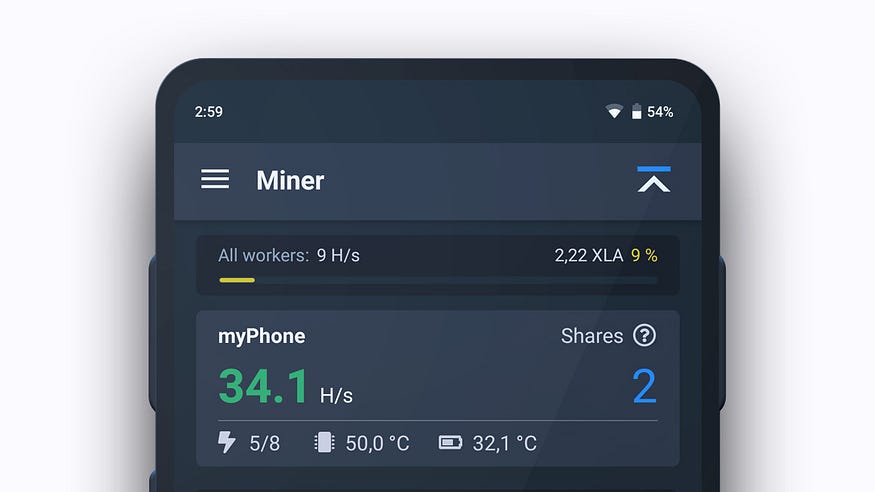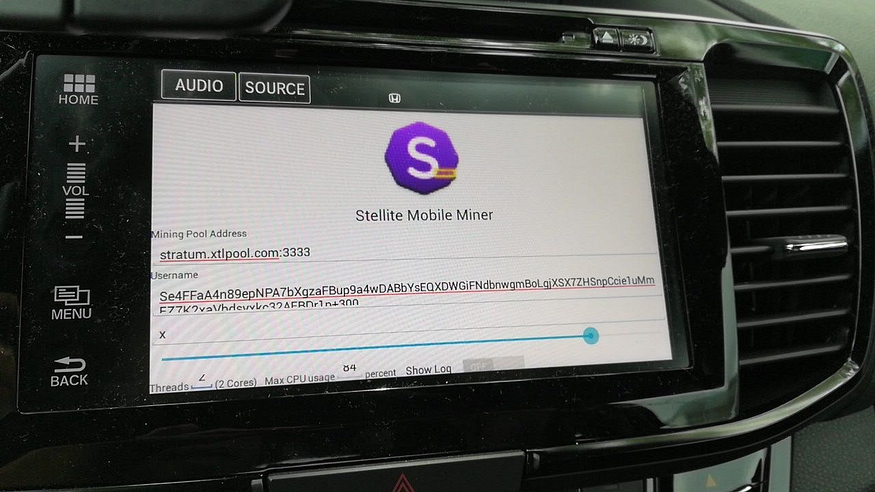
This article presents an overview of the motives and technological challenges of creating a mobile mining application, a mobile-friendly algorithm, and the future developments of ARM CPU architecture.
The profitability of mobile mining
Most people think mobile mining is not profitable. This might be true when we compare the hash rate of one mobile device with that of a PC. Still, when we take the technological evolution and energy efficiency of the ARM CPU architecture into account, the reality is quite different.
The future of ARM CPUs
Mobile devices and the underlying ARM CPU architecture have evolved significantly in recent years, and this trend shows no sign of slowing down!
Even now, ARMs are more energy-efficient than x86 CPUs, and the speeds can easily compete with older CPU variants. More and more laptop manufacturers are also utilising the energy-efficient ARM architecture. And since mining is all about energy efficiency, we think we’re in a good spot with our vision!
Here is a quote from an article about the CPU roadmap from ARM holdings.
Arm compares its Cortex-A76 design with Intel’s seventh-generation Core i5–7300U processor. Intel’s two-core chip, released at the beginning of 2017, has a base speed of 2.6GHz, a maximum speed of 3.5GHz, and draws a mere 15 watts of power on average. Arm projects that processors based on its Cortex-A76 design will hit 3GHz while drawing less than five watts of power.
You can read more about it here:
- https://www.digitaltrends.com/computing/arm-cpu-roadmap-reveals-laptop-takeover-plan/?source=post_page—–3e589029fa74——————————–
- https://newsroom.arm.com/news/accelerating-mobile-and-laptop-performance-arm-announces-client-cpu-roadmap
The current state of mobile mining
In recent years, several initiatives to democratize mobile mining have emerged. Some projects utilize staking — or airdrop — mechanisms to reward the “miners”, which does not really help to further secure and distribute the blockchain network.
We can also see that more and more cryptocurrencies are shifting to GPU and ASIC-resistant algorithms. And quite a few applications already enable mining cryptocurrencies on mobile phones.
This is a step in the right direction, but we want to go further and create a mining environment designed for mobile devices in the first place.
The problem
The main problem we have identified with current initiatives is that the software used to leverage mobile devices for mining doesn’t protect the hardware from being damaged.
The memory requirements for CPU-mineable cryptocurrencies are also not really adjusted to mobile devices, simply because they’re designed for desktop environments in the first place.
Thus, simply creating a mobile mining application with an ASIC and GPU-resistant algorithm would not solve our problem.
The requirements specification
There are three main aspects to consider when developing a mobile-friendly algorithm.
- GPUs should not have an advantage over CPUs — this is to ensure that mining would not be flooded by GPU mining farms.
- Devices should not overheat while mining — nobody likes a burned phone or television.
- The memory requirements should fit — ARMs have a different architecture than desktop CPUs.
The solution
We needed a mobile-friendly algorithm that would not damage the hardware. This is where Panthera and the AMAYC protocol come into play.
Panthera
Our custom proof-of-work algorithm consists of RandomX, yespower and KangarooTwelve. Each of these hashing functions serves its purpose in making energy-efficient CPU and ARM mining a reality.
- RandomX is designed to minimize the efficiency of specialized hardware
- yespower is meant to reduce the capability of GPU hardware and is 17% more efficient on ARM architectures than yescrypt.
- KangarooTwelve provides resistance to two-state quantum computers
This makes Panthera highly efficient on general-purpose CPUs and ARMs.
AMAYC
To ensure the mining device always remains in safe operating conditions, we developed our own solution: the As-Much-As-You-Can (AMAYC) machine learning algorithm.

AMAYC detects if the device will run hot and pauses the mining process until safe CPU, and battery temperatures are reached.
The past development
We’ve been working on a few proofs of concept for the past two years. Those were not fully functional products, but they allowed us to gather feedback and experience in the field of mobile mining applications and the development of a mobile-friendly algorithm.

The public release
The last few months have been dedicated to programming the official mining application for Android devices. We have been conducting internal testing with the core team and some supporters during the whole process.
This has allowed us to identify and fix issues to ensure the mobile miner is stable enough for the public release, which occurred on March 12, 2020.
Download here.
Contribute to helping us create a better mining experience
Since we are evolving in a constantly changing technological environment, we rely on your feedback to improve the mobile mining experience.
So feel free to suggest your feedback and improvements on our Discord channel or GitHub.
Thanks to everyone who has been supporting us all these years!



